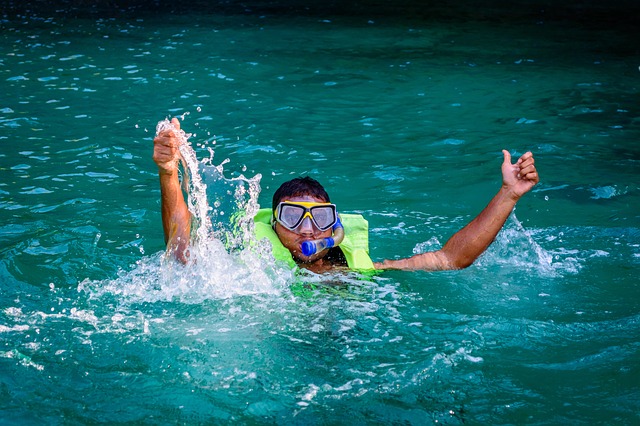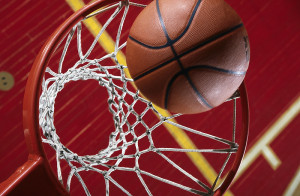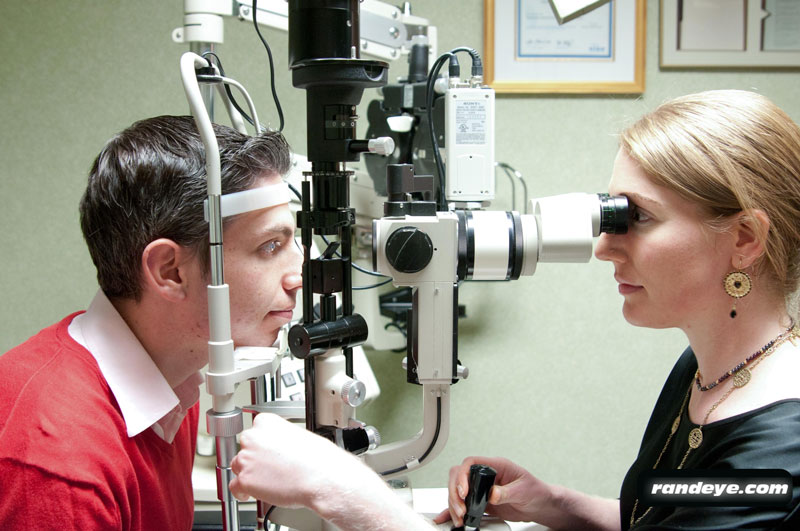June is Cataract Awareness Month
June is Cataract Awareness Month, so make the most of it while learning about how to keep your eyes safe and healthy. A cataract is when the natural lens gets clouded, which is a light-sensitive tissue that helps the eye focus, the result of the clouding could mean distorted or blurred vision. If a cataract is left untreated and is disregarded not only can it impair your vision but it may even cause blindness.
There are many things that can affect ones chances of developing cataracts, such as; family history, radiation, high blood pressure and obesity. Cataracts affect 1/6 of Americans past the age of 40. Once around 75 years old, roughly 70% of people will have cataracts.
Coming to get your vision checked is more than just a monthly or yearly check up, it is about seeing clearly and improving your life with clear vision. Imagine going to see a movie or driving on the road, you might be having a hard time seeing the screen or even a red light. At the end of the day, scheduling an appointment with a licensed ophthalmologist is best way to go. This will help you stay healthy and independent.
UV Exposure to the Eyes and Wearing your Sunglasses
A recent poll taken through the American Academy of Ophthalmology (AAO), shows that there is a need for greater awareness regarding the sun’s sensitivity and UV safety. In addition, the poll also states that the majority of Americans are unaware that taking common everyday drugs, while having light-colored eyes can make them more vulnerable to UV exposure. This happens to be a contributing factor to certain eye conditions and diseases.
Such diseases consist of eye cancers and cataracts, which are some of the leading causes of blindness in the world. Higher amounts of UV exposure might not cause permanent blindness, but it can cause temporary blindness, in some cases.
Here are some tips to follow when trying to protect your eyes from the sun:
- Choose glasses that block 100% of UV rays (both UV-A and UV-B). Avoid blue tinted sunglasses (they emit UV light which you are supposed to be blocking out).
- Wear sunglasses even when it is cloudy outside (UV rays go through clouds and can still affect you).
- Wear a hat (even with your sunglasses).
- Be aware of what medicine you are taking (as some can increase UV sensitivity).
- Going to the beach? Be prepared, the sun reflects off the sand and water, so wear those shades.
- Contact lenses may not have UV protection, so remember to surely wear your sunglasses.
- Use non-irritating sunscreen: PABA free (it can irritate the eyes).
It’s May – Healthy Vision Month and UV Safety Month
As we all know our eyes are an important part of our health and there are many things that you can do to keep them healthy, starting with…
Get a comprehensive dilated eye exam. Sometimes people do not realize that they have an eye problem until it’s too late. So getting an eye exam at your eye care specialist or ophthalmologist is the best thing that you can do to really be sure. When it comes to common vision problems, some people don’t realize they could see better with assistance.
Many common eye problems such as diabetic eye disease, glaucoma, and age-related macular degeneration often do not show warning signs. Getting a dilated eye exam is the only sure way to detect these eye issues in their early stages.
Protective Eyewear – When did it all come about…
Eye protection has always been at the frontier of sports gear. Even today, you see it in nearly every sport, even in some of the sports that do not require it. From early on sports started using protective eyewear, long before most people think. Here are some of the sports and the dates that protective eyewear was implemented:
- Fencing — Mask (1200 B.C.)
- Baseball — Catcher’s Mask (1877)
- Skiing/Snowboarding — Goggles (1965)
- Basketball — Goggles (1968)
- Motor Racing — Full-Face Crash Helmet (1968)
- Hockey — Protective Visor (1973)
- Football — Protective Visor (1984)
- Racquetball — Goggles (1995)
- Soccer — Goggles (1999)
- Lacrosse — Goggles (2005)
- Field Hockey — Goggles (2011)
- Squash — Goggles (2012)
No regrets – You only have one set of eyes!
Eyewear with the purpose of protection is now becoming a trend in professional and non-professional sports. Not long ago most professional athletes did not wear anything for eye protection and eye injuries were extremely common. Due to the high amount of eye injuries, protective eyewear has became more prevalent over the past years and is now seen in nearly every sport, from squash and hockey all the way to water polo and snowboarding.
When protective eyewear first started showing a presence in sports, those who wore it were looked at funny and asked, “why are they wearing such a thing?”. However, those questions have quickly vanished and eyewear has become a fashion statement for some sports. Both kids and parents have now become more accepting and like the image of protective eyewear.
If you are choosing not to wear protective eyewear, consider this:
Sports that contain the use of balls, sticks, bats, racquets or flying objects pose a potential threat for an eye injury. Some sports seen as less harmful such as tennis and badminton involve an object that can move around 60 mph or faster. In a game of racquetball the ball can travel a various amount of speeds ranging between 60 and 200 miles per hour.
Do I have to wear goggles?
Everyday eyewear does not qualify as protective eyewear. When playing a sport or working on the job, protective eyewear is designed for these tasks and made not only to help your vision, but also to withstand impacts. Most sport frames now come with rubber padding around the nose area or wherever the frame comes into contact with the head attempting to add a cushion for the individual.
Most protective sport eyewear is made of polycarbonate. This material is chosen because not only does it have a high impact resistant lens but it also has built-in ultraviolet protection. The downside to using polycarbonate is that it can easily scratch. However, you can request to have a scratch resistant coating
Summer Brings Fun Filled Water Days – Protect Those Eyes

As summer approaches and the days get warmer, people will start using the pool and going to the beach more often. All that sounds great, but are your eyes protected while you’re enjoying the summer water? Simple things like a scuba diving mask or swimming goggles can both sharpen your vision and keep your eyes safe.
You might ask yourself, why swimming goggles or even a scuba mask is needed?
It’s simple, light acts differently in water than it does in the air, basically blurring (distorting) what you see. For example, when underwater objects appear larger and closer than they really are, your hand-eye coordination could be thrown off as a result of this. Water bends light differently than air, therefore your vision will be out of focus when your eyes come into contact with the water. To give you an idea, a person that has 20/20 vision on land, would be considered legally blind underwater. By using a mask or goggles you are allowing a pocket of air to be kept in front of you at all times, which allows light rays to travel to and through your eyes in a more accurate way.
Many of our patients that enjoy water sports have opted for laser vision correction, given that they have been deemed a candidate. Laser vision correction, such as our no-flap LASIK or upgraded refractive options, virtually eliminate or reduce the dependency of prescription eyewear. Imagine not having to worry about purchasing an expensive prescription scuba mask or swimming goggles. More so, the freedom from the cumbersome limitations that the above pose. Once again, imagine not having to deal with this…we can help.
Basketball Eye Safety Tips
 There are other sports that pose dangers to the eye. Basketball players are very susceptible to getting poked in the eye. Anything from a mere corneal abrasion to a more vision threatening injury can occur. Also, a flailing elbow can cause a fracture to the eye socket. Unfortunately, many basketball players only wear eye protection after sustaining a significant eye injury. Sports goggles can be sight saving and have become more fashionable, available, and affordable.
There are other sports that pose dangers to the eye. Basketball players are very susceptible to getting poked in the eye. Anything from a mere corneal abrasion to a more vision threatening injury can occur. Also, a flailing elbow can cause a fracture to the eye socket. Unfortunately, many basketball players only wear eye protection after sustaining a significant eye injury. Sports goggles can be sight saving and have become more fashionable, available, and affordable.
Any participant in recreational or professional sports who suffers an eye injury, who has an eye disease, or who has had eye surgery should discuss with their eye doctor when they can safely return to their sport and what precautions they should take. A common sense approach to the real eye risks inherent in sports activities can make participants safer and minimize the chances of losing their precious eyesight.
By:
Comprehensive Ophthalmology, Refractive & Cataract Surgery
Sports Eye Safety Awareness Month
Comprehensive Ophthalmology, Refractive & Cataract Surgery
Any participant in recreational sports who suffers an eye injury, who has an eye disease, or who has had eye surgery should discuss with their eye doctor when they can safely return to their sport and what precautions they should take. A common sense approach to the real eye risks inherent in sports activities can make participants safer and minimize the chances of losing their precious eyesight.
Dr. Oz and Lisa Oz – Health and Wellness Fair this Saturday
Dr. Oz and Lisa Oz will be at the West Palm Beach Health and Wellness Fair this Saturday March 29th from 10AM – 4 PM.
Dr. Mehmet Oz will be presenting “How to Live the Good Life” discussing topics such as health, personal growth and happiness.
Viewer Questions will be personally answered by Dr. Oz.
Visit the Rand Eye booth at the Health and Wellness Fair in West Palm Beach.
Saturday, March 29th
10AM – 4PM
WPBF 25 Health & Wellness Festival 2014
Location: The Gardens Mall
3101 PGA Boulevard
Palm Beach Gardens, FL 33410
It’s time to get serious about your health, South Florida! Dr. Oz is coming back to see you personally! WPBF 25′s Health & Wellness Festival 2014 is bigger and better than last year, as America’s Doctor brings the excitement of The Dr. Oz Show to the Gardens Mall! Just announced: Lisa Oz, best-selling author, show host and editor-at-large of Dr. Oz’s new magazine The Good Life, joins her husband on stage!









